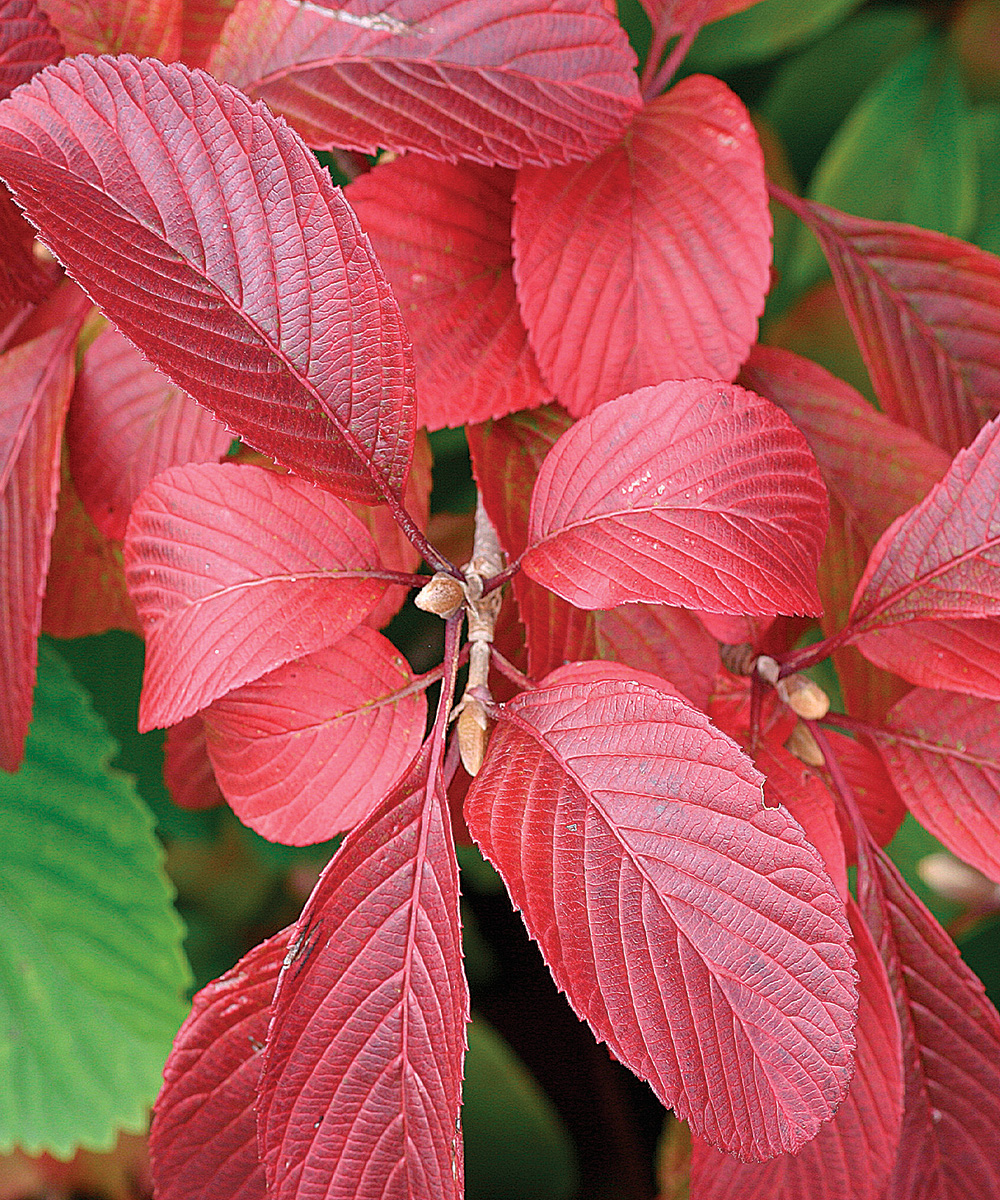COFFMAN VIBURNUM WALK
Why viburnums?
With over 150 species worldwide, viburnums have been a culturally important plants to many peoples for centuries. Bred for many traditional uses, viburnums are now one of the most popular landscape shrubs used today. With showy characteristics including beautiful and sometimes aromatic blooms, colorful fruit, and spectacular fall color, its no wonder why its believed that every garden should have a viburnum.
“A garden without a viburnum is akin to life without music and art.” – Michael Dirr, author of Viburnums: Flowering Shrubs for Every Season

North American viburnums are found natively growing in 46 of the 50 states and have proven to be a diverse and resilient group of plants. Growing as trees, forming dense thickets, or living in cracks of cliff faces, viburnums are adaptable to almost all garden situations. The flowers provide abundant nectar in the spring and summer, while the fruit is relished by migrating and year-round resident birds in winter. Viburnums are host plants to countless insects and make up a sizeable component to woodland edges and understories across North America. Some species can be evergreen, providing shelter from wind or cold weather, while others lose their leaves providing cover over the ground.
The diversity of sizes, shapes, flowering, foliage, fruit, fall color, and more makes these plants a natural option for gardeners. Some varieties like Viburnum carlesii can be quite fragrant, filling the garden with delicious perfume from gorgeous pink blooms. Others like Viburnum opulus can brighten the winter landscape with cherry red, persistent fruits. Even others like Viburnum x rhytidophylloides keeps its leaves year-round, making a great hedge, windbreak, or background plant. Viburnums can be deciduous, semi-evergreen, or evergreen. Some are large, growing up to 60 feet tall, with others being more compact and only reaching two to three feet in height. The leaves of a viburnum can be serrated, dentate, or lobed, with hairs or without. Buds can be waxy, smooth, or hairy, as well as red, green, or brown. While the flowers are mostly white, some also have hues of pink. Some viburnums can be beautifully fragrant; however, other types can be foul smelling, or simply have no odor at all. Fruit color can be black, purple, blue, red, orange, or yellow.
The Iowa Arboretum & Gardens established this viburnum collection 2008 to display the wide breadth of diversity in garden variety viburnum selections; ultimately, introducing an appreciation and love for viburnums to every gardener. The garden is dedicated in honor of Dr. Eugene Coffman, a native of Iowan and viburnum collector. Practicing medicine in Dubuque, Iowa, Gene and his wife Bobbie commenced their love of viburnums when a patient of his was hired to landscape around their home in 1961. As the story goes, Gene was automatically hooked on viburnums thereafter, turning his yard and passion for woody plants into the development of Ridge Road Nursery near Bellevue, Iowa. A particular fondness for viburnums led him to amass one of the largest collections in the Midwest. Eugene Coffman passed away in 2015. Ridge Road Nursery donated this particular collection to the arboretum, which is comprised of cold-temperate North American viburnums and their Asian cousins.
Viburnum sieboldii ‘Wavecrest’ is a rare selection, named by Dr. Coffman for the former Wavecrest Nursery in Michigan. Favored by collectors and arboretum collections across the upper Midwest, this handsome shrub has earned a reputation for its tree-like habit (though it can be grown as a multistemmed shrub). Blooming in early-summer, this selection has red fruits and dark red fall color. ‘Wavecrest’ is also drought tolerant while being extremely winter hardy.

Viburnum sieboldii ‘Wavecrest’. Photo courtesy of millettephotomedia.com
Back to Our Plants hompage
Plant Lists:
Viburnum bitchiuense – Yeddo viburnum
Viburnum carlesii – Korean spice viburnum
Viburnum dentatum ‘Autumn Jazz’ – Autumn Jazz arrowwood viburnum
Viburnum dentatum ‘Blue Muffin’ – Blue muffin arrowwood viburnum
Viburnum dentatum ‘Chicago Lustre’ – Chicago lustre arrowwood viburnum
Viburnum dentatum var. deamii – Southern arrowwood viburnum
Viburnum dilatatum ‘Asian Beauty’ – Asian beauty linden viburnum
Viburnum plicatum f. tomentosum ‘Igloo’ – Igloo doublefile viburnum
Viburnum plicatum f. tomentosum ‘Shasta’ – Shasta doublefile viburnum
Viburnum plicatum f. plicatum ‘Newport’ – Newport Japanese snowball
Viburnum prunifolium – Black haw
Viburnum rafinesquianum – Downy arrowwood
Viburnum x rhytidophylloides ‘Allegheny’ – Allegheny viburnum
Viburnum sargentii ‘Chiquita’ – Chiquita sargent viburnum
Viburnum sieboldii ‘Wavecrest’ – Wavecrest Siebold’s viburnum
Viburnum trilobum ‘Alfredo’ – Alfredo American cranberrybush viburnum
Viburnum trilobum ‘Wentworth’s’ – Wentworth’s American cranberrybush viburnum
Viburnum x carlcephalum – Fragrant snowball
Viburnum x juddii – Judd viburnum
Viburnum x pragense – Prague viburnum
